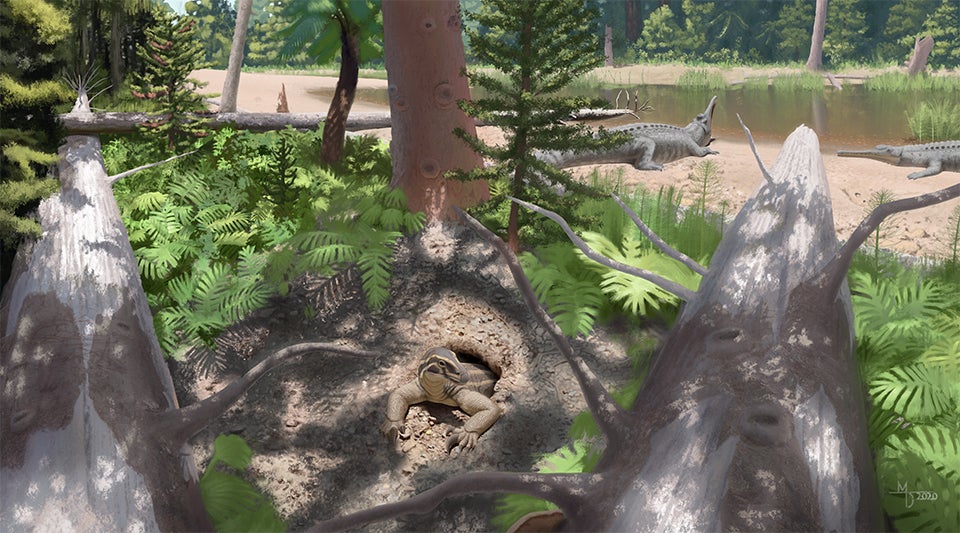Parks Service interns discover new species of 220-million-year-old reptile
The creature probably looked like a mashup of a chameleon and an anteater

Your support helps us to tell the story
From reproductive rights to climate change to Big Tech, The Independent is on the ground when the story is developing. Whether it's investigating the financials of Elon Musk's pro-Trump PAC or producing our latest documentary, 'The A Word', which shines a light on the American women fighting for reproductive rights, we know how important it is to parse out the facts from the messaging.
At such a critical moment in US history, we need reporters on the ground. Your donation allows us to keep sending journalists to speak to both sides of the story.
The Independent is trusted by Americans across the entire political spectrum. And unlike many other quality news outlets, we choose not to lock Americans out of our reporting and analysis with paywalls. We believe quality journalism should be available to everyone, paid for by those who can afford it.
Your support makes all the difference.A team of interns discovered a new species of 220 million-year-old burrowing reptile in Petrified Forest National Park in Arizona, according to the National Park Service.
Drepanosaurs were odd little guys and “possessed an array of strange morphologies including enlarged second claws, bird-like beaks, and tails ending with a claw,” the Park Service writes.
A team of student researchers from schools like Virginia Tech and Idaho State made a discovery that was even odder: most drepanosaurs had claws for climbing or living in trees, but their specimen, full name: Skybalonyx skapter, had claws meant for burrowing. Its name means “dung-claw digger” in Greek, the researchers told CNN, and its bones were found in a deposit of fossilized poop.
"Skybalonyx goes to show that prehistoric ecosystems, such as those at Petrified Forest National Park, were much more similar to the modern than previously thought, with animals climbing, burrowing, swimming and flying just like today," Xavier Jenkins, an Idaho State University PhD student who helped discover the fossils, told CNN.
Researchers analyzed Skybalonyx’s claws and found they had similar anatomy to today’s moles and echidnas. They believe the creature might have looked like a combination of an anteater and a chameleon.
The fossils, found in an area that was probably a swamp at the time, were so small that the paleontologists used a new method of screen-washing to discover them, where rocks are run through a series of metal screens with water and broken down.
The findings appeared on 8 October in the Journal of Vertebrate Paleontology.



Join our commenting forum
Join thought-provoking conversations, follow other Independent readers and see their replies
Comments